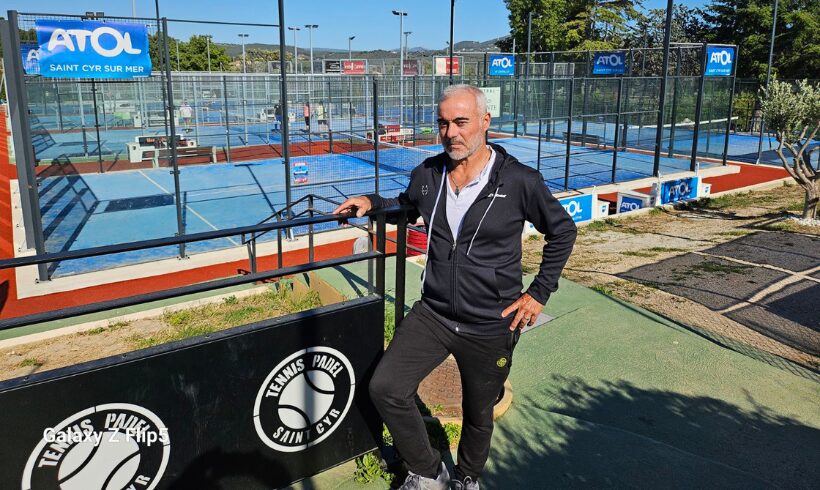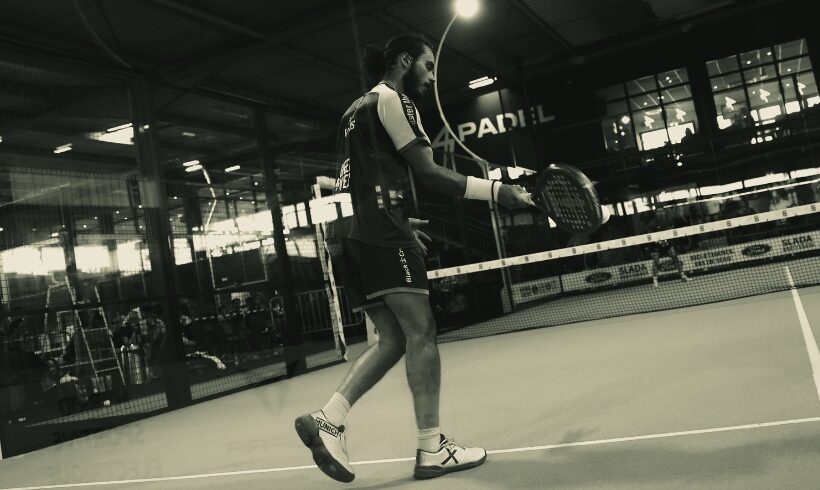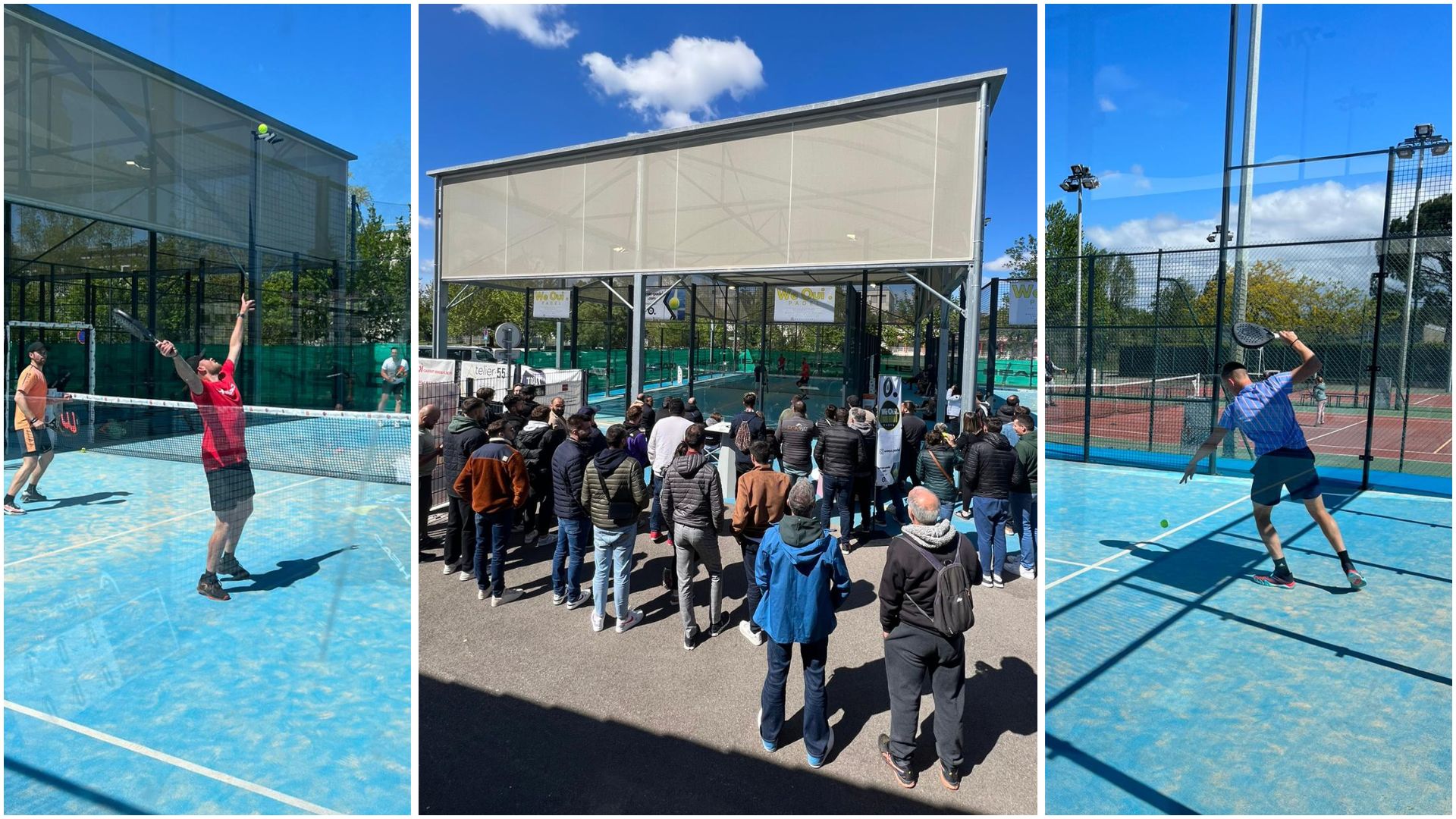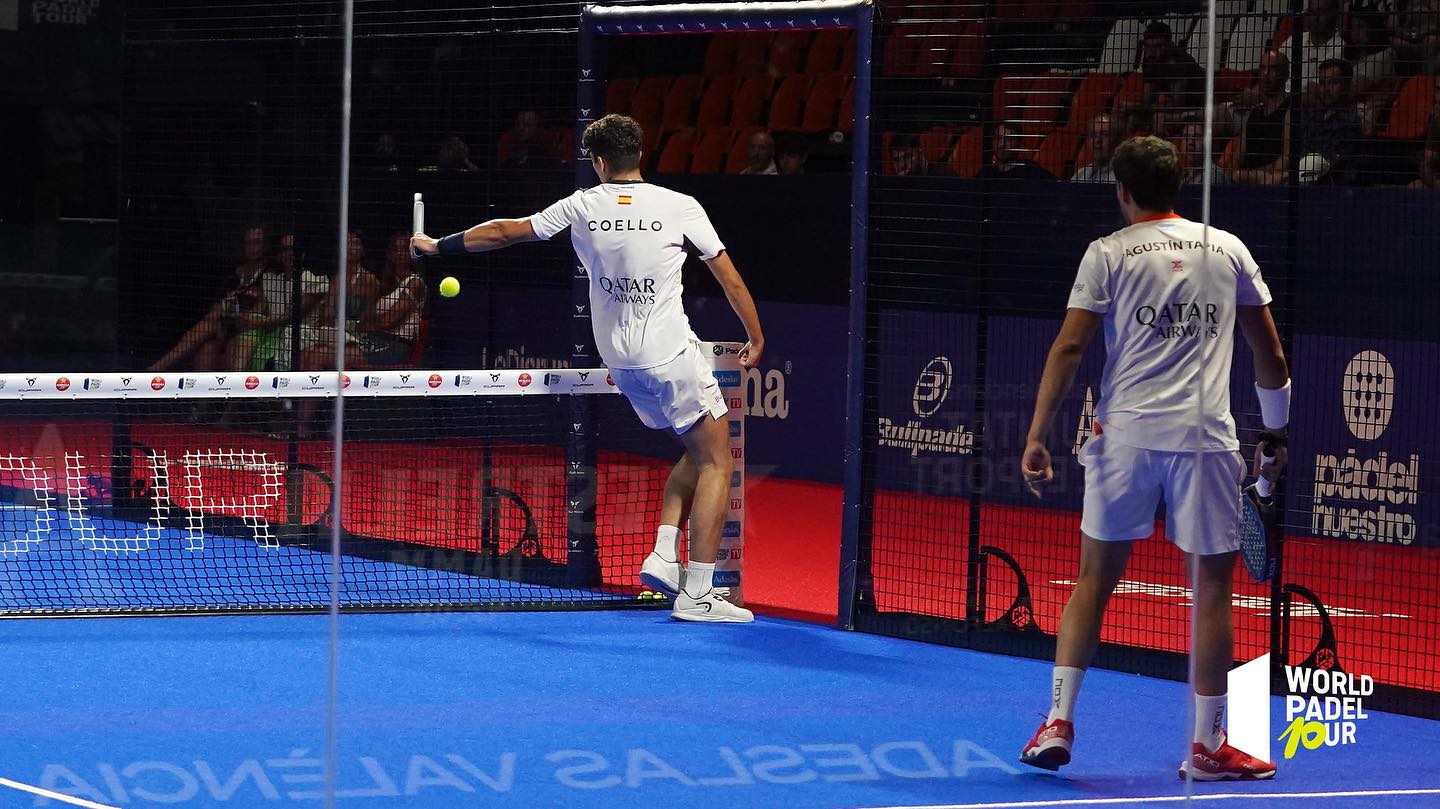Le padel is booming and the number of players is increasing every day. Good for our sport. But that's no reason to take unnecessary risks, especially when they're largely avoidable.
Each racket of padel has a wrist strap. It allows its user to put this strap on like a ski pole. Its use is compulsory. You should neither tell yourself that you don't need it, nor play with players who do not wear it because you run the risk of getting hurt or being injured.
When to put on your strap?
Just before warming up, put on your wrist strap. It's like a seat belt seized on your wrist. Take the time to place it well to avoid it getting in your way. The warm-up will allow you to see if everything is ok.
If you see players, partners, opponents who do not wear it, tell them to put it in the interest of the game and the risks for everyone.
In general, teachers of padel ask you in the first lesson to put on your wrist strap. This will be your first piece of advice and certainly one of the most important in terms of safety for you and those around you.
The circumstances of snowshoeing
Even if you have a great grip, it can happen to let go of the racket. The involuntary circumstances are numerous.
- Your grip is wet / your hands are wet.
- A powerful blow like a smash can make you let go of the racket with among others the force of the inertia.
- Your racket telescopes with your partner's
- A blow made near the window
- Clumsiness or trivial action
Finally, the International Federation of Padel is very clear on this:
The racket must be equipped with a non-elastic wrist strap with a maximum length of 35 cm, which must be attached to the handle and wrapped around the wrist as protection against any accident. Its use is obligatory.
Franck Binisti discovers the padel at the Club des Pyramides in 2009 in the Paris region. Since padel is part of his life. You often see him touring France going to cover the major events of padel French.



































































































 A1 Padel Chile Open – Number 1 KO… Tolito and Gonzalo lose a set… unprecedented final in Chile!
A1 Padel Chile Open – Number 1 KO… Tolito and Gonzalo lose a set… unprecedented final in Chile! P1000 Bourg-Lès-Valence – Start of the half live!
P1000 Bourg-Lès-Valence – Start of the half live! World Seniors Plus 2024 – France defeats its Swedish beast and wins the bronze medal!
World Seniors Plus 2024 – France defeats its Swedish beast and wins the bronze medal! Alain Idier: “Adding tracks of padel, without sacrificing tennis”
Alain Idier: “Adding tracks of padel, without sacrificing tennis” Manuel Vives: “It’s extremely difficult to get by financially”
Manuel Vives: “It’s extremely difficult to get by financially” And 4 for Frédérick and Mehdy with network 4PADEL !
And 4 for Frédérick and Mehdy with network 4PADEL ! Benoît Letourneau (GM Squash & Padel): “Have a hundred young people in multi-snowshoes within three years”
Benoît Letourneau (GM Squash & Padel): “Have a hundred young people in multi-snowshoes within three years” P1000 Bourg-Lès-Valence – The quarters to follow live
P1000 Bourg-Lès-Valence – The quarters to follow live P1000 Padel Horizon – Live, results, programming…
P1000 Padel Horizon – Live, results, programming… With the “BetClic Remontada Padel ", the padel invites itself for the first time at the foot of the Eiffel Tower
With the “BetClic Remontada Padel ", the padel invites itself for the first time at the foot of the Eiffel Tower World Seniors Plus 2024 Open (F) – The French women win with four gold medals!
World Seniors Plus 2024 Open (F) – The French women win with four gold medals! The AF finalPadel Major Tour 2024 to follow live
The AF finalPadel Major Tour 2024 to follow live World Seniors Plus 2024 Open (M): Cruel defeat for Launo/Lagloire, Maigret and Moreau covered in gold!
World Seniors Plus 2024 Open (M): Cruel defeat for Launo/Lagloire, Maigret and Moreau covered in gold! Play at padel on his yacht? Possible for €233.000!
Play at padel on his yacht? Possible for €233.000! TOP Padel : “A premium club with 10 slopes in Toulouse”
TOP Padel : “A premium club with 10 slopes in Toulouse” The padel of the Barrière Country Club are born in La Baule
The padel of the Barrière Country Club are born in La Baule Why clubs padel do they close?
Why clubs padel do they close? The basic tactics of padel
The basic tactics of padel A par 4 is always a winner...even if you manage to defend it!
A par 4 is always a winner...even if you manage to defend it! Carbon fiber VS fiberglass: what to choose?
Carbon fiber VS fiberglass: what to choose? How to effectively test a racket padel ?
How to effectively test a racket padel ? At the heart of padel – Episode 23: defend the window well
At the heart of padel – Episode 23: defend the window well Prohibition on playing topless Padel : the reasons
Prohibition on playing topless Padel : the reasons What is the difference between a dormilona, a dejada and a cushioned puerta?
What is the difference between a dormilona, a dejada and a cushioned puerta? FIP Tour – Going far from Europe, THE strategy to earn points!
FIP Tour – Going far from Europe, THE strategy to earn points! What is a good football player? padel ?
What is a good football player? padel ? “Lefties give me headaches when I play against them!”
“Lefties give me headaches when I play against them!” At the heart of padel – Episode 14: how to earn points in winter?
At the heart of padel – Episode 14: how to earn points in winter? La padel to fight Parkinson's disease
La padel to fight Parkinson's disease Don't play with a cracked or broken racket, your body will thank you!
Don't play with a cracked or broken racket, your body will thank you! Michel Cymes: “The padel, physically, it’s serious!”
Michel Cymes: “The padel, physically, it’s serious!” Jeremy Gala: “Promote the padel among young people in Belgium remains a challenge”
Jeremy Gala: “Promote the padel among young people in Belgium remains a challenge” The French Touch Academy organizes its selection day Padel-Study
The French Touch Academy organizes its selection day Padel-Study Report on the detection and training of younger generations
Report on the detection and training of younger generations Player's adult courses from April 8 to 21, 2024!
Player's adult courses from April 8 to 21, 2024!
Is it possible to substitute il cordino della pala?
Normally sì. Devi essere abile. 😉
A stupid question,
a friend of mine is ambidextrous. I'm serious, he takes forehand with his right hand and forehand with his left hand. What solutions does he have? or is it really forbidden?
Have a good day
Hello Dave, normally he has to wear a wrist strap and thus choose a hand. The reason is especially for others, his partner, his adversaries. : /
On the other hand, that he contacts us, his case interests us 🙂
Salve, anch'io sono ambidestro. Durante the partita è possibile cambiare mano? durante il gioco non lo faccio mai ma tra un punto e altro mi capita di farlo perchè questo mi allow reed di cambiare modo di giocare… è vietato? E 'possibile cambiare mano reed durante il gioco togliendo e rimettendo il cinturino velocemente?
Mi si é molto rovinato la cinturino da polso della mia racchetta da padel. C'é modo secondo voi di poterlo sostituire?
Grazie mille per ogni vostro suggestions.
Sfortunatamente, not è easy rhymes a cinturino da polso. My puoi provare a farlo da solo e avvicinarti al club.